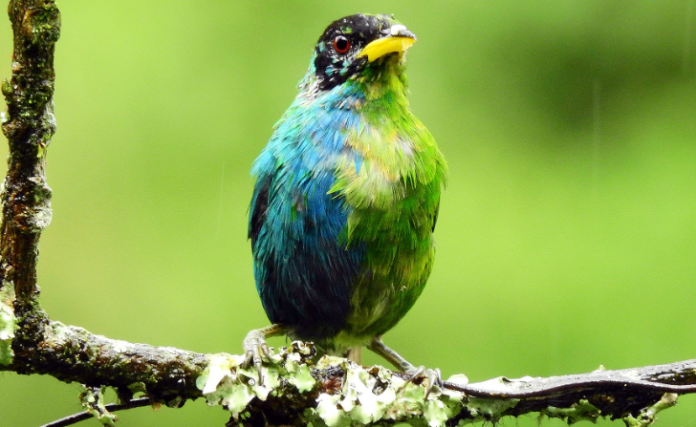A team of researchers has been able to make a discovery that has not happened in nearly 100 years – a rare bird that is half-female and half-male.
University of Otago zoologist Professor Hamish Spencer found the extremely rare bird species during a holiday in Colombia when an amateur ornithologist, John Murillo, pointed out a wild Green Honeycreeper.
The bird had a distinct half-green, or female, and half-blue, male, plumage, and what makes this discovery stand out is that it was caught on camera as the duo captured images of the rare bird.
Scientifically known as bilateral gynandromorphic, the bird exhibits both male and female characteristics on opposite sides of its body. In such birds, one side of the body appears phenotypically male, with male plumage and reproductive organs, while the other side appears phenotypically female, with female plumage and reproductive organs.
The researcher elaborates that gynandromorphs – animals with both male and female characteristics in a species that usually have separate sexes – are important for our understanding of sex determination and sexual behaviour in birds.
Gynandromorphism is different from hermaphroditism, where an individual possesses both male and female reproductive organs simultaneously.
The rare feature is likely due to a genetic anomaly during the early development of the bird, where the cells differentiate into both male and female characteristics.
Professor Spencer explained that they are “animals with both male and female characteristics in a species that usually have separate sexes.” This phenomenon is usually observed in insects, spiders, butterflies, and even lizards or rodents.
“The phenomenon arises from an error during female cell division to produce an egg, followed by double-fertilization by two sperm,” he added.





